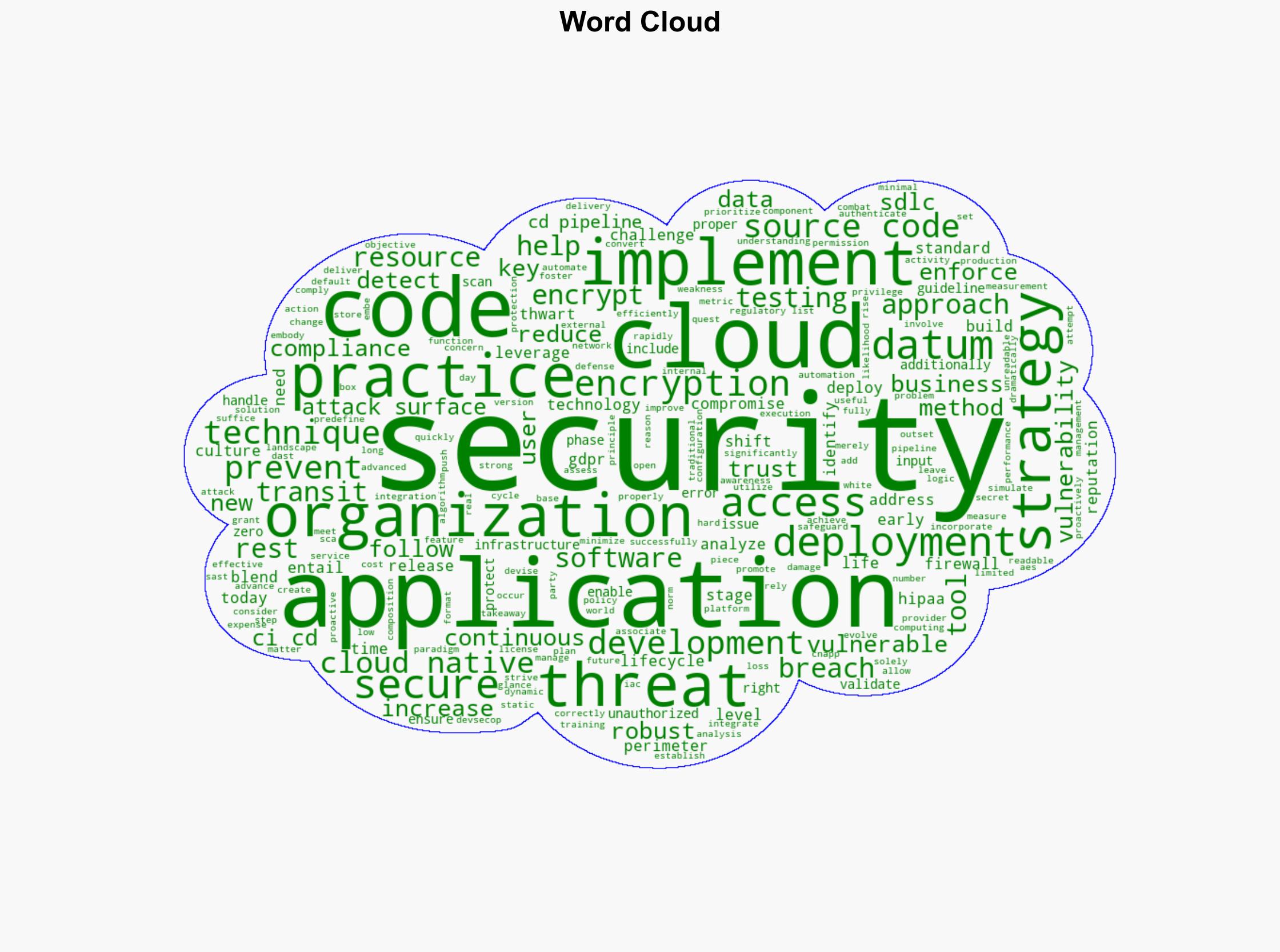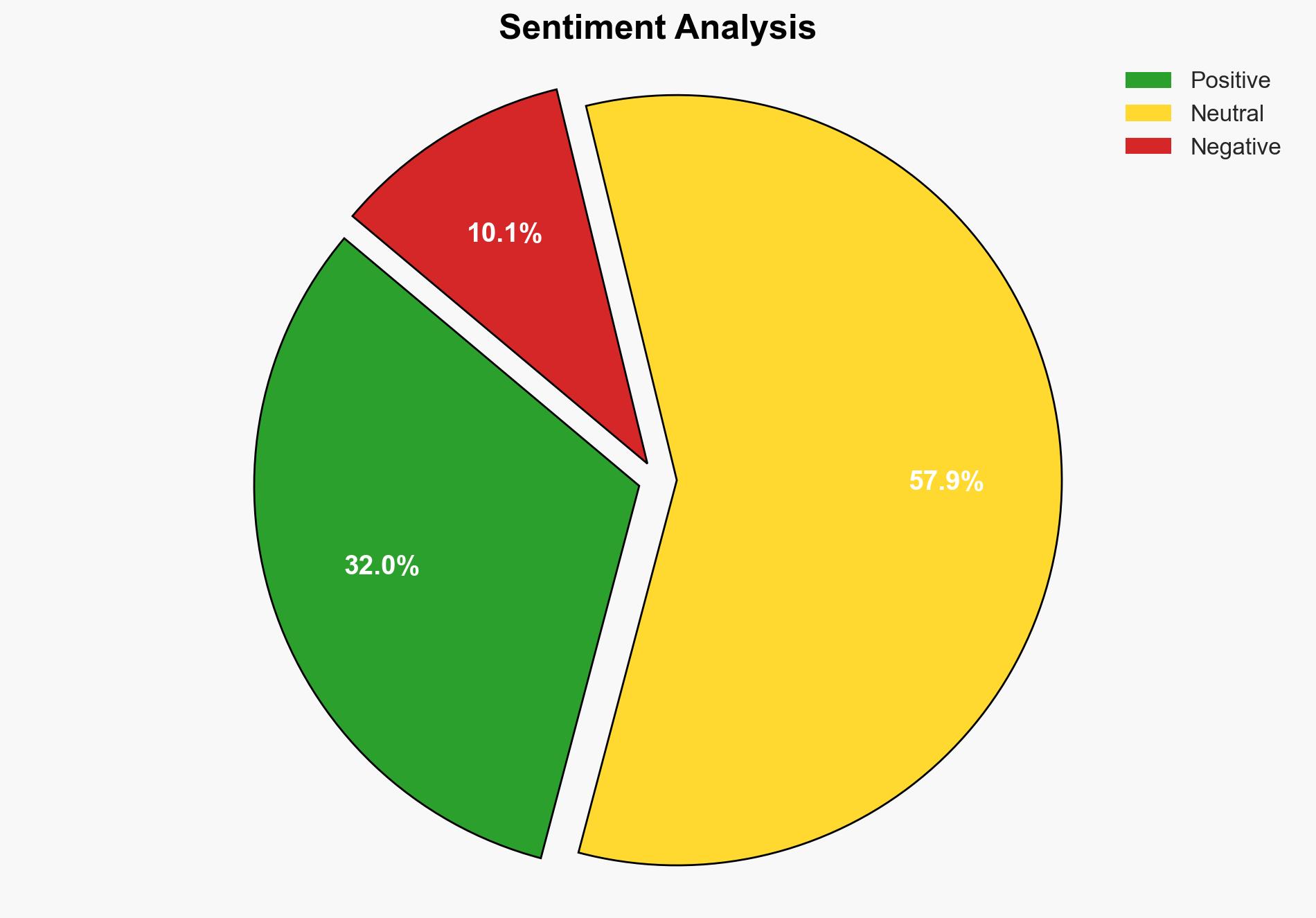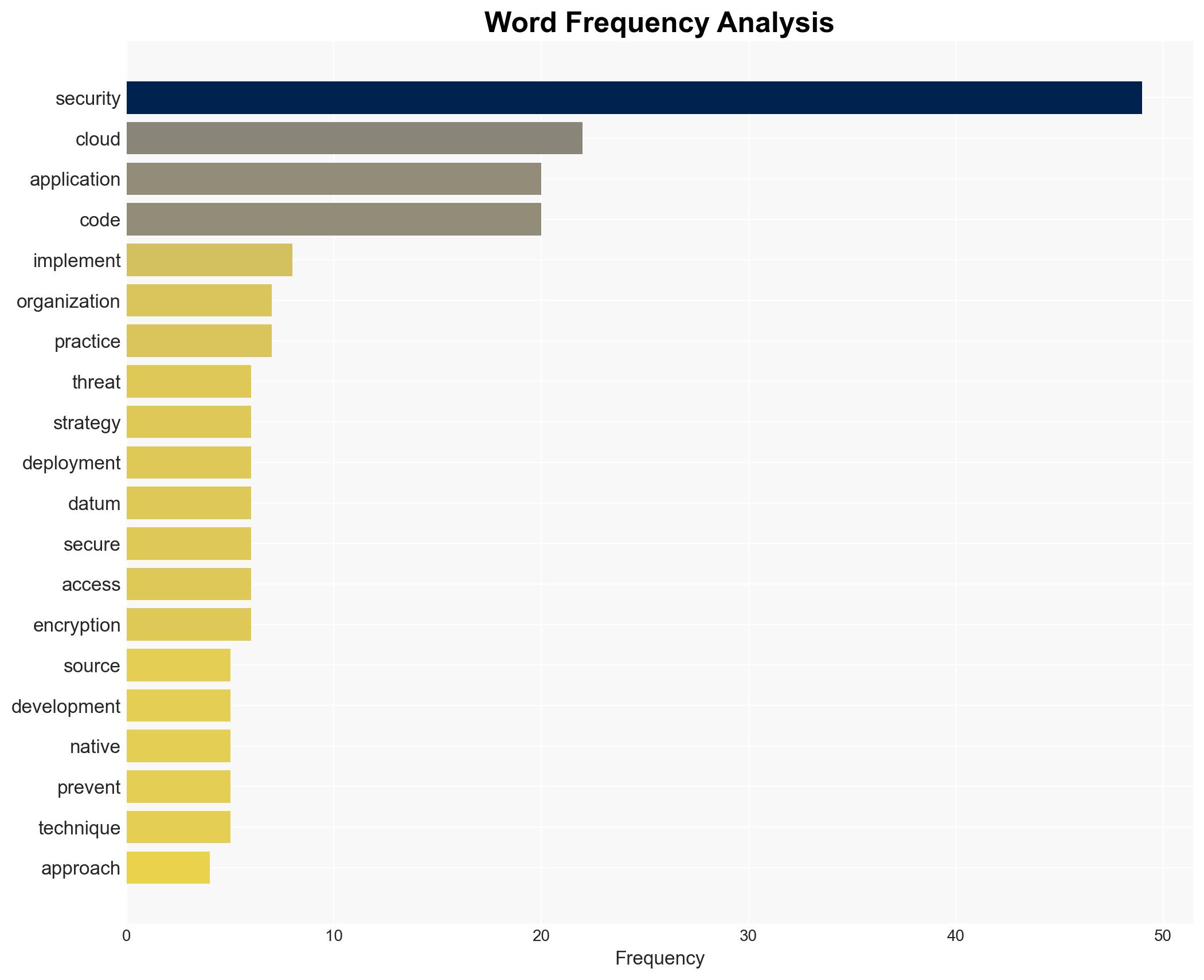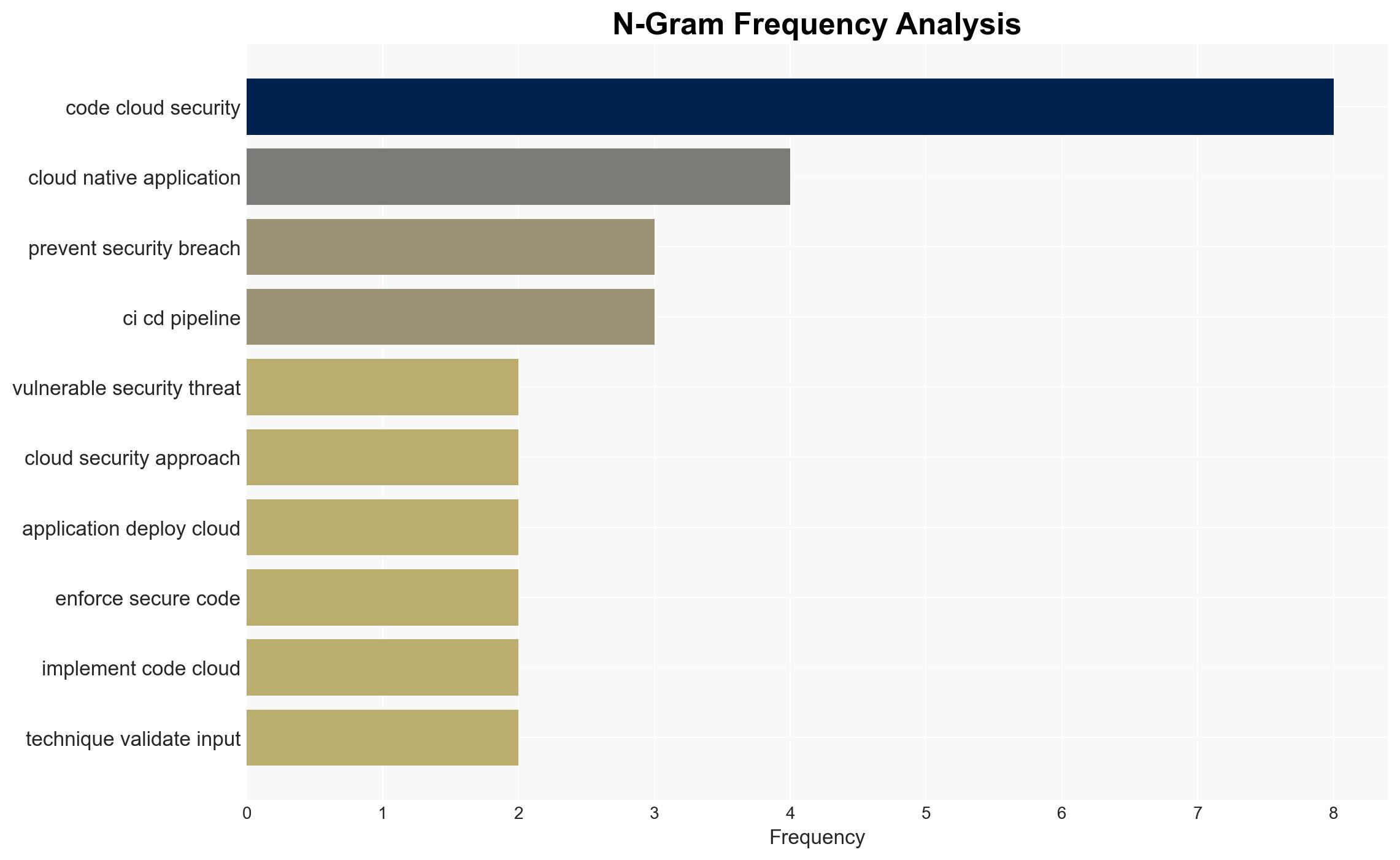Demystifying Code-to-Cloud Security – DevOps.com
Published on: 2025-04-08
Intelligence Report: Demystifying Code-to-Cloud Security – DevOps.com
1. BLUF (Bottom Line Up Front)
The transition to code-to-cloud security is essential for modern organizations to address evolving security threats. Traditional perimeter security is insufficient due to the increased attack surface in cloud-native applications. Implementing security measures at each stage of the software development lifecycle (SDLC) is crucial for preventing breaches and ensuring compliance with regulatory standards such as GDPR and HIPAA. Organizations must adopt a proactive security culture, integrate security into CI/CD pipelines, and enforce zero-trust security principles to safeguard their data and reputation.
2. Detailed Analysis
The following structured analytic techniques have been applied for this analysis:
General Analysis
The shift to cloud-native application development has expanded the attack surface, making applications more vulnerable to security threats. Traditional security strategies, which rely heavily on perimeter defenses like firewalls, are no longer sufficient. The code-to-cloud security approach integrates security practices throughout the SDLC, from planning and development to deployment, to prevent security breaches and data compromises. This approach supports compliance with regulatory standards and fosters a security-first culture within organizations. Key practices include input validation, error handling, data encryption, and the integration of security measures into CI/CD pipelines.
3. Implications and Strategic Risks
The primary risk associated with inadequate code-to-cloud security is the potential for data breaches, which can damage an organization’s reputation and lead to significant financial losses. Additionally, failure to comply with regulatory standards such as GDPR and HIPAA can result in legal penalties. The trend towards increased cloud adoption necessitates a shift in security strategies to address new vulnerabilities. Organizations that fail to adapt may face heightened risks to their operational stability and competitive position.
4. Recommendations and Outlook
Recommendations:
- Adopt a comprehensive code-to-cloud security strategy that integrates security measures at every stage of the SDLC.
- Enhance organizational security culture through continuous awareness training and performance measurement.
- Implement zero-trust security principles to minimize access rights and reduce the risk of data breaches.
- Incorporate security checks into CI/CD pipelines to detect vulnerabilities early and ensure secure code deployment.
Outlook:
In the best-case scenario, organizations that implement robust code-to-cloud security practices will achieve enhanced protection against security threats, maintain compliance with regulatory standards, and foster a culture of security awareness. In the worst-case scenario, failure to adapt to new security paradigms may result in increased data breaches and regulatory penalties. The most likely outcome is a gradual shift towards integrated security practices as organizations recognize the necessity of adapting to the evolving threat landscape.
5. Key Individuals and Entities
The report does not mention specific individuals or organizations by name. However, it emphasizes the importance of organizational leadership in fostering a security-first culture and the role of development teams in integrating security practices throughout the SDLC.





